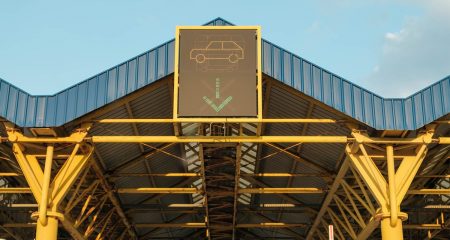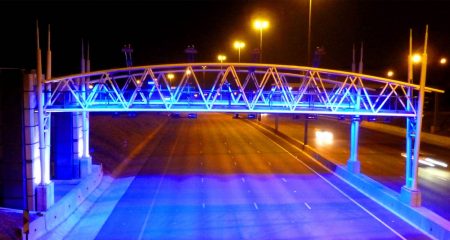 Roads agency Sanral is in the process of repackaging and expanding the function of its Transaction Clearing House (TCH) to provide a host of other mobility services.
Roads agency Sanral is in the process of repackaging and expanding the function of its Transaction Clearing House (TCH) to provide a host of other mobility services.
TCH is currently almost exclusively used for clearing e-toll collections for various toll operators and toll plazas.
Alex van Niekerk — planning, toll and transportation manager for Sanral’s northern region — says the initiative will result in the e-toll account becoming a mobility account that could, for instance, be used for vehicle licence renewal payments, cashless parking, fuel payments and to use Sanral’s customer service centres for driving licence renewals.
Van Niekerk told the Smarter Mobility Africa 2019 conference in Pretoria last week that Sanral, in conjunction with the department of transport, is also exploring the possibility of introducing integrated or automated fare collection for the various modes of public transport.
He says there are a lot of people who on a daily basis start their trip using a taxi, move on to a bus and then into a Passenger Rail Agency of South Africa (Prasa) train.
“They use several modes of transport but they need to buy tickets here and need to pay cash there — and if there is a strike, it means they have lost their monthly ticket because they have paid upfront for their bus ticket for the month.
Linking systems
“We are not looking at replacing any existing system,” he adds. “We are looking to see if we can use the existing system to link all the fare collection systems out there at the back end where people have a central account and they service this account.”
Van Niekerk says this account-based ticketing system would help commuters to pay for different transactions submitted by various operators, such as the Rea Vaya bus service in Johannesburg, A Re Yeng bus service in Tshwane and Prasa train services.
He stresses that it will be a national rather than Gauteng-based system. As various transport authorities come on board, they will be integrated at the backend with users only needing to top up their services account.

Van Niekerk adds that the information provided by the full integration fare management and advanced public transport management systems will enable the authorities to do proper planning.
“We will now understand the transport user’s pattern end to end, where they are getting onto public transport, the different modes of transport, and the duration of the full journey,” he says.
“This will provide transport planners with information on how to better plan and how to better provide inter-modal transport facilities and so forth.”
Sanral has had several engagements with different role players, and Van Niekerk says the department of transport is very active at this stage in engaging with municipalities and provinces about the system.
“Hopefully by the end of this month, the minister of transport will also do a proof-of-concept demonstration to show them how this may work in the future.”
Van Niekerk adds that Sanral will roll out a mobility app so people can manage their accounts, monitor their specific transactions, and view the new services.
He says Sanral has already partnered with the private sector to implement cashless parking sites. These involve a person’s vehicle licence plate being read by the service provider for a particular parking garage, and the boom opening so they don’t need a ticket or to make any payment at a pay station — with the transaction cleared by TCH.
Van Niekerk says the first shopping centres and hospital parking areas are already operating the system and that more will hopefully be added this month.
Facilities
He points out that Sanral has 40 facilities that are open until 9pm seven days a week, where motorists can do their eye tests for their driver’s licence renewals by appointment and walk out of the facility 15 minutes later.
Van Niekerk says there are also opportunities, particularly in the vehicle fleet market, to take cash out of the system to reduce the high frequency of corruption involving fuel payments.
He says Sanral could look for additional sources of revenue through these initiatives, but at this stage is exploring business opportunities within Sanral to sweat current assets, thereby reducing the operational costs of TCH, for instance.
“It is early days to determine a revenue stream,” he says. “We are currently exploring the different options and many of them are dependent on other parties and the actual take-up from the public.”
He adds that the business opportunities will not necessarily be regarded as additional revenue streams because they involve streamlining or improving current processes or operational requirements within government to make them more effective.
- This article was originally published on Moneyweb and is used here with permission




